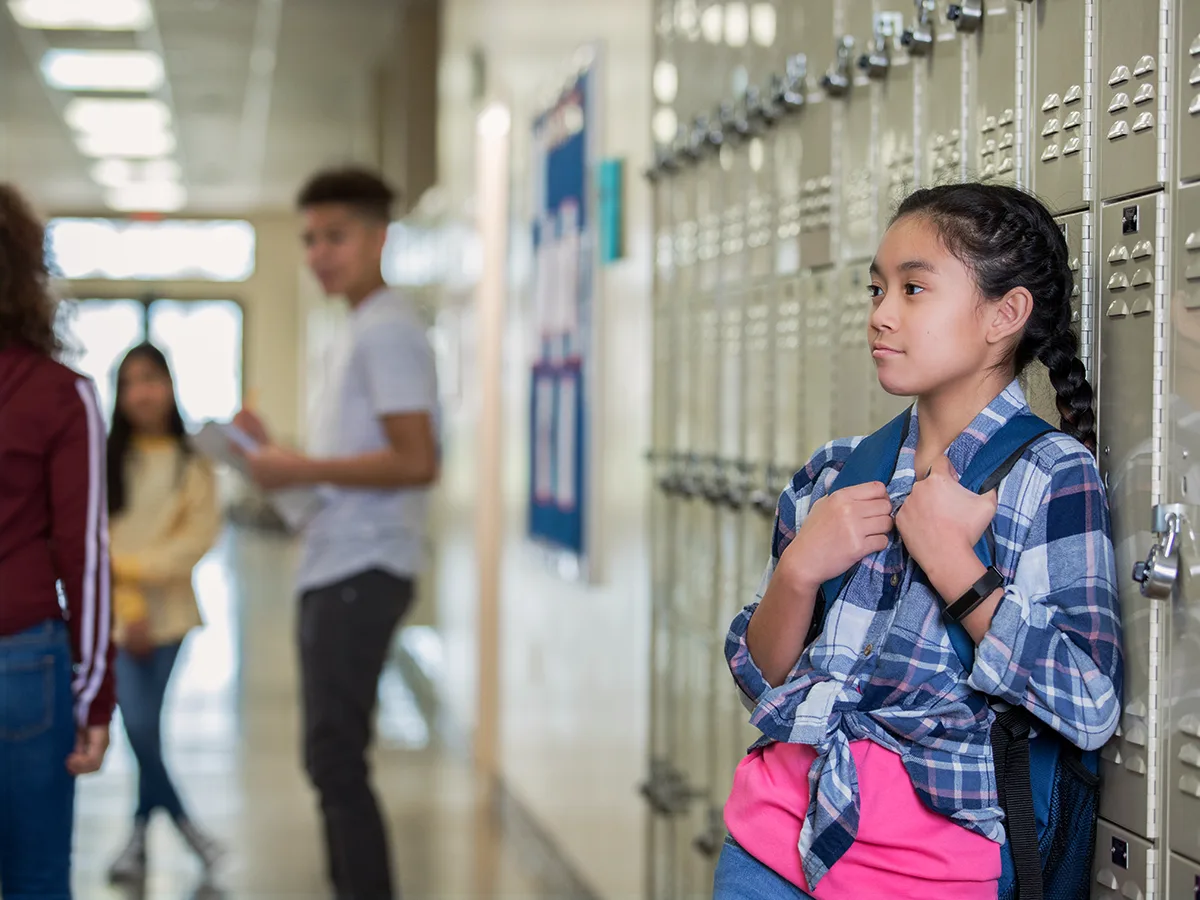New challenges kids face in middle school

At a glance
Middle-schoolers travel between classes on their own and store their books in lockers.
Middle-schoolers usually have a different teacher for each subject.
Students in middle school face more social pressure and often worry about their ability to fit in and make friends.
Making the shift from grade school to middle school can be tough for any tween. Academic expectations and social interactions increase. This transition can create unique challenges for kids with learning and thinking differences. Here’s a closer look.
Different classroom and school structure
One of the biggest challenges for middle-schoolers is the new learning environment. Kids may need to get used to a bigger school. They may also have to switch classrooms between classes.
Navigating a new school can be tough, especially for middle-schoolers who have trouble with . Consider taking a tour of the school ahead of time. Then you can map out the schedule with the most direct routes from class to class.
Using a locker and staying organized
Middle school students will also have to keep track of time. They have to get to class before it starts. And they often have to get materials from their locker between classes. For kids who struggle with , the need to manage time and stay organized can be too much.
You can help by asking your child to create a locker organization system. If possible, adding items like shelves and section dividers can keep things in place. You can also plan out locker stops and put them on the class schedule.
Having more than one teacher
Unlike grade school, kids often have a different teacher for each middle school subject. They may have different teachers for science, math, English, and other subjects. They may also have other teachers for special classes (like art, PE, and music).
Each teacher may have slightly different classroom expectations. For kids who have trouble following social cues, this can be hard. Teaching your child ways to recognize social rules and to self-advocate can be helpful.
New academic expectations
Middle-schoolers often have more homework and long-term projects to do. And these will come from more than one teacher. Kids who have trouble with executive function might need help learning how to break down big projects into smaller chunks.
Middle-schoolers will also learn, problem-solve, and think critically on their own. For kids who learn and think differently, this may mean developing new skills. Kids will need to learn how to look up information, take notes, and write in their own words. Specific note-taking strategies and graphic organizers can help.
New social expectations
Middle school is a time of major social growth. Going from being the oldest students in elementary school to the youngest in middle school can be scary. Middle-schoolers may have to deal with cliques and bullies, or worry about being lonely.
But being in a larger school also gives your child the chance to make new friends. You can help to prepare your child by:
Role-playing common social situations
Teaching your child ways to connect to other kids
Reminding your child to explore interests and passions
Clubs and extracurricular activities are a great way to meet others who like the same things.
Keep in mind that if your child has trouble picking up on social cues, middle school socializing may be hard. So this may be a good time to start discussing social boundaries and secrets with your child. (You may also want to take a look at tips for reducing risky behavior.)
Ways to help your middle-schooler
It may take your child and you some time to adjust to middle school. The rules, policies, and school staff may be very different than in grade school. Do your best to show empathy and to respond calmly to frustration. You can also try these strategies:
Build a relationship with your case manager. If your child has an Individualized Education Program (IEP) or a 504 plan, try to meet with the case manager in the spring before middle school starts.
Set up a time for your child to meet the teachers before school begins. If that’s not possible, work together with your child on a back-to-school letter or a 3×3 card. These can help teachers get to know your child and understand how to support them.
Stay in touch with your child’s teachers. Meet with the teachers if your child still struggles to adjust after the first month. And be sure to find ways to talk to your child’s teachers about specific learning and thinking differences.
See an example of an effective email to a teacher.
Explore more ways to teach your middle-schooler organization skills.
Get tips to prepare your child for changes to routine in middle school.
Key takeaways
It may take time for your child to get used to middle school.
Try to visit the school at least once with your child before school starts.
Meet with teachers before school starts or during the first month of school to review your child’s learning needs or IEP.

